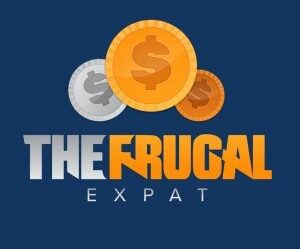Dividend stocks have been all the rage since the market downturn in 2022. They have been coming on strong with the low-interest rate environment that ushered in the last bull run. Are dividend stocks dead now?
It has become increasingly harder to identify great dividend stocks recently. With the yields of most dividend-paying stocks below 4% and bank interest rates closer to 4%, people gravitate towards those higher rates.
It makes sense. People want the safety and comfort of a higher rate of return instead of waiting and hoping that a company's stock will rise.
If you are looking at a higher return and getting a dividend, then high-growth dividend ETFs may be where you should look next. It gives you passive income from their dividends with a rise in price appreciation as the market rises. Plus, if 2023 becomes a recession, it would be nice for our investments to give us income in return, making these ETFs much more appealing.
Here are The Top Dividend ETFs for 2023
Here is a good list of some of the best dividend ETFs you could add to your portfolio in 2023.
SCHD: Schwab U.S. Dividend Equity ETF
SCHD has been hitting the rounds with much news about it recently. It has a higher dividend of 3.37% and a dividend growth rate of 12% over the last ten years. The ETF has also been beating some stalwart ETFs like VOO in a previous couple of years with a better overall performance.
The ETF tracks the Dow Jones Industrial Dividend 100 Index and has grown over 327% since its inception in October 2011. The ETF includes many household names, such as Verizon, Home Depot, and Lockheed Martin. PepsiCo and Coca-Cola are also part of their top 10 holdings. These companies bring about massive stability and value to the investor, making SCHD a great ETF to hold for the long term.
If you are looking for solid income in a stable asset, it is easy to look at SCHD. It was having a better year than most bond funds in 2022. The dividend yield will be close to the rest of the ETFs on this list, so take a chance in 2023 with this dividend-growth ETF.
Related: SCHD vs VOO: Which ETF Should You Choose?
VYM: Vanguard High Yield Dividend ETF
Vanguard ETFs are some of the best to choose from, but if you are looking for an excellent ETF for dividends, don't look any further. VYM is an exceptional dividend ETF that competes significantly with SCHD.
VYM is a high-yield dividend ETF that looks to add some of the highest dividend-yielding stocks to its portfolio. It seeks to track the performance of the FTSE® High Dividend Yield Index, which comprises many stocks with high yields. The portfolio consists of over 440 different companies ranging from consumer staples to energy stocks.
With a ten-year performance of over 10% and a yield of 3.01%, it is hard to pass over this highly coveted dividend ETF. With the S&P 500 averaging close to that with a lower yield, you can get a pretty good amount of dividend income from holding VYM in your portfolio.
Related: SCHD vs VYM: Which is the Better Dividend ETF?
VIG: Vanguard Dividend Appreciation ETF
VIG is Vanguard's Dividend Appreciation ETF that seeks to track those large-cap companies that have increased their dividends over the last ten years. It follows the S&P U.S. Dividend Growers Index and holds about 289 stocks.
In the last ten years, VIG has had an average annual growth of 11.25%, which lags behind the S&P 500 and SCHD. The fund does have a 0.06% expense ratio making it a cheaper ETF to hold in your portfolio. The yield, on the other hand, is smaller than SCHD. It has a yield of 1.93%.
Many of the other dividend ETFs on this list have a higher yield. VIG has 23% of its fund composition dedicated to information technology, with Microsoft, Visa, and Master Card in its top 10 holdings. That reduces the dividend a bit as these have low dividend yields like companies like AbbieVie. It holds Coke-Cola and Home Depot in their top 10, but those companies with less concentration cannot help raise the yield.
The good thing is that VIG brings in some great companies with the potential to have higher dividends. As the 2008 crash happened, it sustained much better than the S&P 500 funds like SPY and VOO. The tech portion of VIG allows the fund some room for capital growth on the side of providing a decent dividend yield.
Related: SCHD vs VIG: Which High Growth Dividend ETF Wins?
DGRO: iShares Core Dividend Growth ETF
DGRO is the iShares version of a dividend growth ETF. It has focused on companies growing their dividend for five consecutive years. Their yield is only at 2.39%, and that is much less than both SCHD and VYM. As a dividend ETF, you are looking for income, and if you are not, you are hoping for some capital appreciation or dividend growth.
DGRO has had a dividend growth rate of 10.61% for the last five years. It has been growing its dividend consecutively for the previous eight years. Over the last five years, it has increased by an average of 10.17%. It also has an expense ratio of 0.08%, which makes it one of the cheaper dividend ETFs on this list.
As someone looking for dividend yield to grow, this could be a suitable ETF, but SCHD is probably a better dividend growth ETF. If you are looking for more capital appreciation than dividend growth, VIG could be a better ETF.
HDV: iShares Core High Dividend ETF
HDV is an iShares Core Dividend ETF that tracks the Morningstar® Dividend Yield Focus IndexSM. The index is created from high dividend-yielding companies, similar to VYM. These companies range from Exxon Mobile to Verizon and Coke-Cola.
The index is highly concentrated on energy and healthcare stocks. It gives these two sectors about 50% of the total fund composition. For many people, that can be a higher than-wanted concentration on two sectors, but for others, the high dividends outweigh the risks.
The low expense ratio of 0.08% makes it on par with VYM and SCHD, which have an expense ratio of 0.06%, so the low costs make it a good fund to hold.
SPHD: Invesco S&P 500® High Dividend Low Volatility ETF
SPHD is another high dividend ETF that tracks the S&P 500® Low Volatility High Dividend Index. It seeks to track the 50 least volatile dividend-paying companies in the S&P 500. This could be a good fit for those looking for more safety and less volatility.
It holds about 52 different companies and expects to return a dividend yield of 4.88%. That is a massive yield for these dividend ETFs. It has a ten-year average of 8.37% returns, and compared to the S&P 500, which gained 11.96% in that same period, it is a good bit less than the market. The good thing is that the yield helps compensate for the lack of performance.
One of the more significant issues with SPHD is the high expense ratio of 0.30%. If the performance is on par with SCHD or VIG, the fees alone will bring down some of those gains.
The other issue is the high concentration of companies. It only holds 50-52 different companies, which can be a little riskier as if one company fails, it can bring some havoc into the ETF. After saying that, the ETF does focus on low-volatility companies, so it is supposed to have less volatility than some of these other ETFs.
Final Thoughts:
Dividend ETFs can help create income in your portfolio by using dividend-paying stocks. They can be helpful tools for building wealth and income. The great thing is that you can have the market's returns and benefit from a higher dividend. If you are looking for dividend-paying stocks and need help finding where to look, start with a suitable dividend ETF to help you along the way.

I’m Steve. I’m an English Teacher, traveler, and an avid outdoorsman. If you’d like to comment, ask a question, or simply say hi, leave me a message here, on Twitter (@thefrugalexpat1). Many of my posts have been written to help those in their journey to financial independence. I am on my journey, and as I learn more I hope to share more. And as always, thanks for reading The Frugal Expat.







